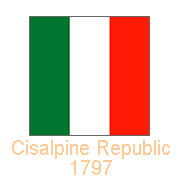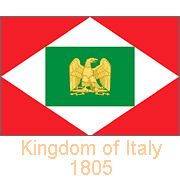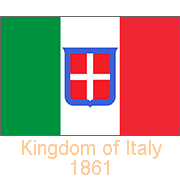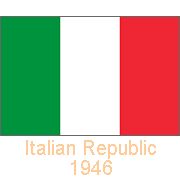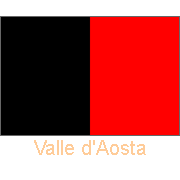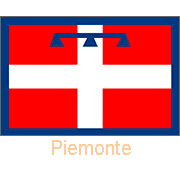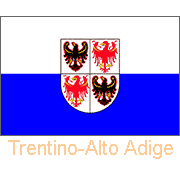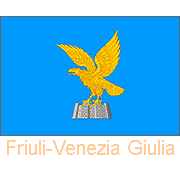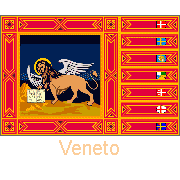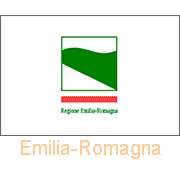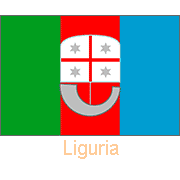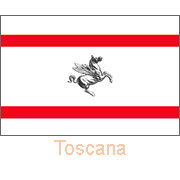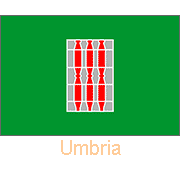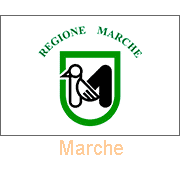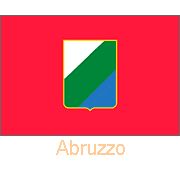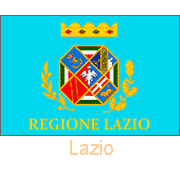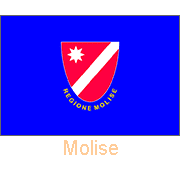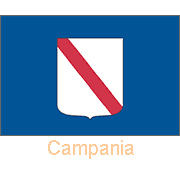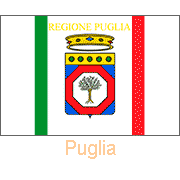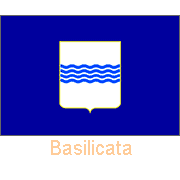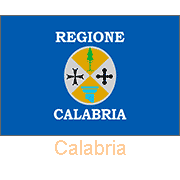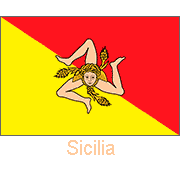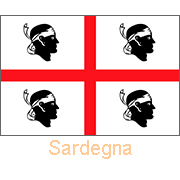Flags from Italy
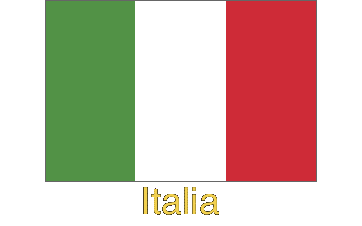
A Flag History of Italy
The colours of the Italian flag, green, white and red, are thought to have their origin in the colours of the military uniforms of the Duchy of Milan in the late 18th Century as the Civic Militia wore a green and white livery. After the French under Napoleon Bonaparte had gained control of northern Italy in 1796, the Transpadane Republic was proclaimed in Milan. The Civic Militia became the National Guard, which included red in their uniform.
you may then send it as a postcard if you wish.
The French army had also formed the Cispadane Republic from the provinces of Modena, Bologna, Ferrara and Reggio Emilia south of the Po river. Here, the first flag in the “Italian” colours was hoisted on 7 January 1797: a horizontal tricolour of red-white-green with the republican arms in the centre. The Transpadane Republic adopted a vertical tricolour of green-white-red. The French created the Cisalpine Republic when on 30 June 1797, Cispadana and Transpadana merged with the province of Novara. Cisalpina adopted a flag on 11 May 1798, a square vertical tricolour, clearly influenced by the flag of revolutionary France. It is claimed that changing the blue of the French flag to green was Napoleon’s decision. Italy’s national colours were now confirmed.
The constitution of the Cisalpine Republic was changed on 26 January 1802 to allow the French First Consul, Napoleon Bonaparte himself, to become its president. The country’s name changed to the “Italian Republic”. The flag’s design was changed to a red square with a white rhombus and a small green square in the middle of the rhombus and was adopted on 20 August 1802. Three years later, on 17 March 1805, it became the Kingdom of Italy, and Napoleon was crowned as its king in the Cathedral of Milan. The flag stayed the same, although its proportions could be changed to 2:3 and Napoleon’s eagle was placed in the centre of the green rectangle as his standard. It ended on 11 April 1814 with Napoleon’s defeat and exile to the island of Elba.
On 17 March 1861, the drive for the unification of Italy succeeded: Victor Emmanuel II from the House of Savoy, who had ruled the Kingdom of Sardinia from 1849, proclaimed the Kingdom of Italy. Its flag had been blue with at upper hoist a red square with a white cross; upon unification, it adopted the green-white-red tricolour; in the centre, the arms of the house of Savoy, a blue-bordered red shield with a white cross. After World War II, this coat of arms was removed; the monarchy was abolished, and the Italian Republic proclaimed adopting the present green-white-red flag.
The 20 regions of Italy have all adopted a “gonfalon” or “gonfanon”, a type of heraldic flag or banner, suspended from a crossbar. It has been made into a regular flag, although not all of these are official.


